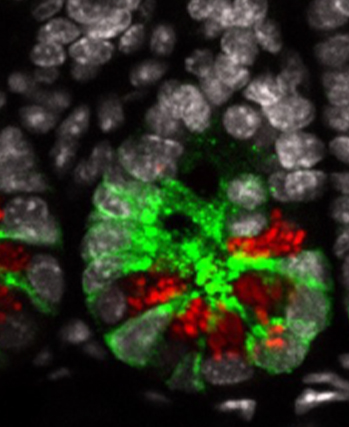The paper establishes the phosphorylation of heterogeneous nuclear ribonucleoprotein A1 (hnRNP A1) by the AMPK-related protein kinase 5 (ARK5) in human bone osteosarcoma epithelial (U2OS) cells during hypertonic stress. Phosphorylation of hnRNP A1 by ARK5 causes it to move from the nucleus to the cytosol where it binds to specific mRNAs. The silencing of ARK5 increases the expression of antiapoptotic protein Bcl-xL and consequently delays caspase activation. hnRNP A1 is a mRNA-binding protein which controls various aspects of the cell stress response.
Targeting mRNA binding proteins to respond to stress responses
Research Area: Biochemistry, Cell Biology
https://doi.org/10.1016/j.jbc.2022.102364
Authors: Krishna Bhattarai, Travis Richard, Thet Fatica, Brianna Frangione, William G. Willmore, Martin Holcik
Related Articles

Publication
BMP signaling in the intestinal epithelium drives a critical feedback loop to restrain IL-13-driven tuft cell hyperplasia
Although Helminth infections are prevalent throughout the world, they are particular a health...

Publication
LSD1 represses a neonatal/reparative gene program in adult intestinal epithelium
After birth, the epithelium that lines our gut transitions (or matures) so that it can deal...
Publication
Targeting mRNA binding proteins to respond to stress responses
The paper establishes the phosphorylation of heterogeneous nuclear ribonucleoprotein A1...